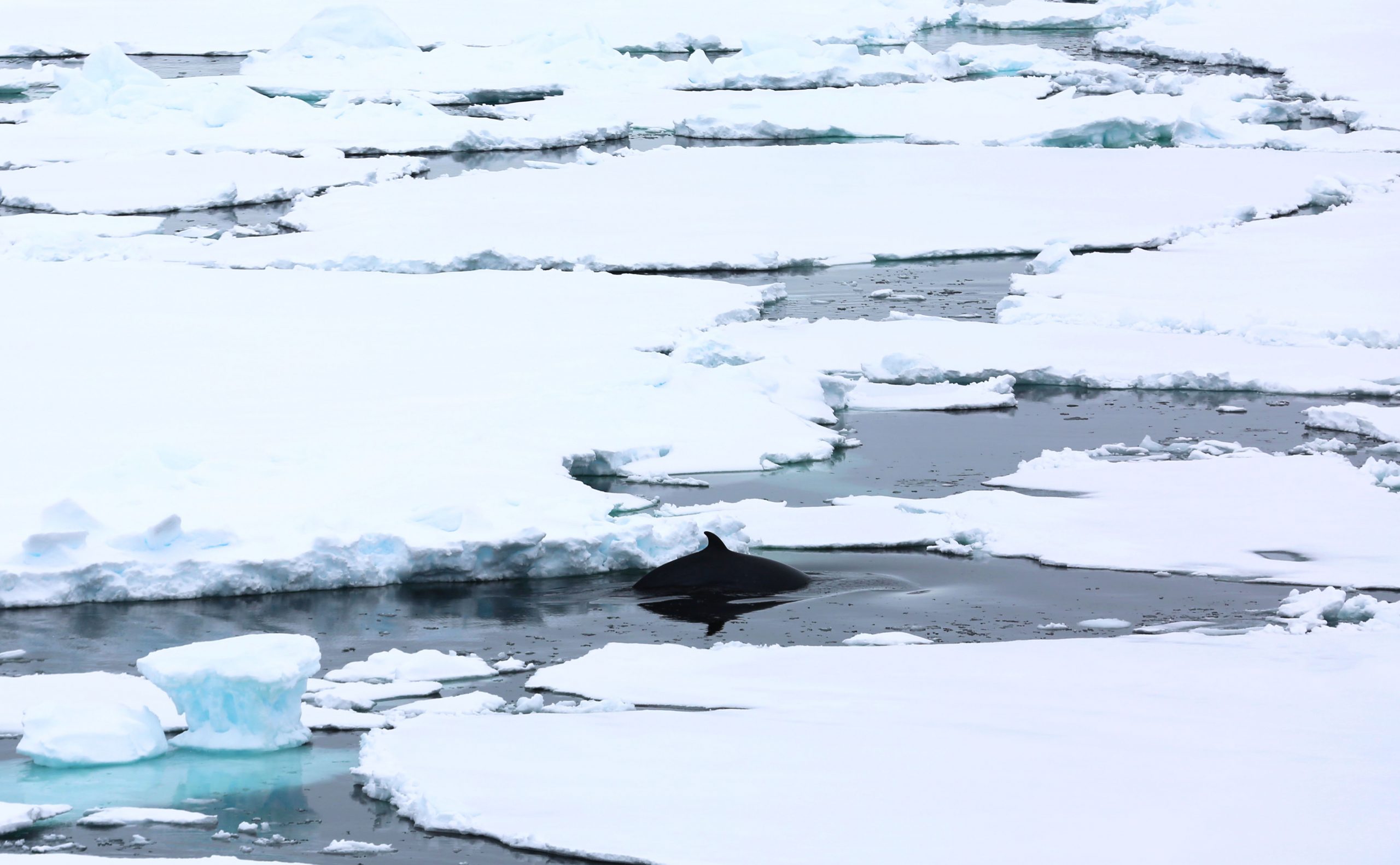by Matthew Shupe, CIRES/NOAA scientist and co-coordinator of MOSAiC
Déjà vu. At about 11:30 ship time today Markus and I stood on the P-deck above the bridge on Polarstern and looked out across the approaching sea ice edge. We did the same back in September as Polarstern embarked for the first time into the ice to start MOSAiC. Now it is to restart MOSAiC. Then, it was much windier. Now, it is actually quite mild. The edge is so clearly demarked now. Unlike some of my voyages in the past, here there were no stray chunks of ice extending out to meet us. Instead, a mosaic of shapes and colors, most less than about 30 feet across, all jumbled close together. Polarstern approached and pushed through without problem. Right away we could see some very thick ice, remnants of pressure ridges. Here and there bright blue patches where melt ponds hand already started to form on the ice. But with the slightly colder temperatures in the last couple of days these ponds typically had a thin layer of ice on top. And all of the ice was bright white, blanketed in a thin layer of new snow. This state is clearly transitionary. The ice is flirting with the melt season. It has warmed dramatically in the last couple of weeks and started to melt from the top…. But then cold air flowing in from the north has put a temporary stop to that melt, even turning it around a bit. The new snow means that relatively more of the incoming sunlight is reflected back to space…. Providing somewhat of a buffer for the ice. I guess this will be for only a short period as we are getting well into June now and the overall solar input is large and growing. The temperatures outside are right at the melting point. And the clouds are a persistent blanket, further boosting the amount of heat that is trapped by the surface. Many here wait in great anticipation for melt to reveal itself again, and to possibly take hold of the ice consistently for the coming season.


